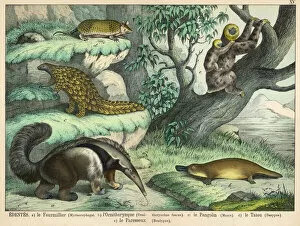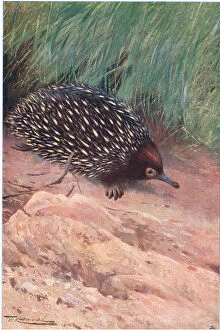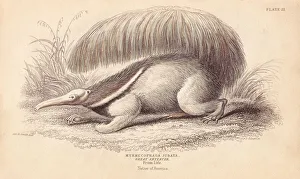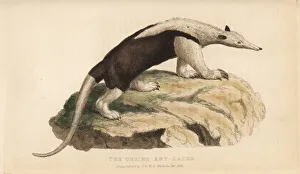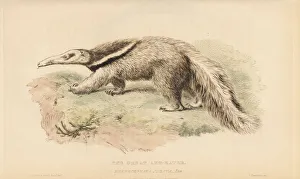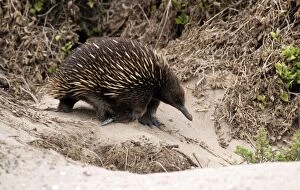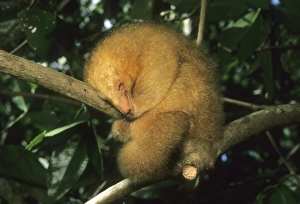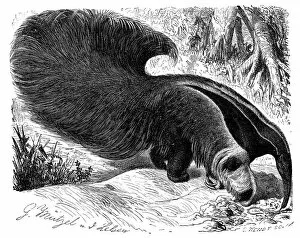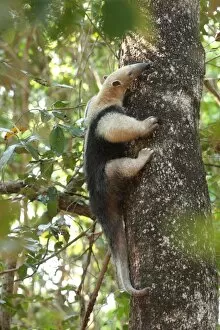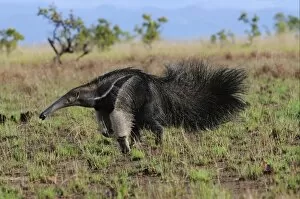Ant Eater Collection
"Exploring the World of Ant Eaters: From Various Quadrupeds to Enchanting Illustrations" Ant eaters, fascinating creatures found in various quadruped species
All Professionally Made to Order for Quick Shipping
"Exploring the World of Ant Eaters: From Various Quadrupeds to Enchanting Illustrations" Ant eaters, fascinating creatures found in various quadruped species, have captured the attention of wildlife enthusiasts worldwide. In Australia's Victoria region, these unique animals can be spotted roaming their natural habitats. One such species is the Spiny Ant-Eater, beautifully depicted in a vibrant illustration from Wildlife of the World circa 1910. Another remarkable the Giant Ant-Eater (Myrmecophaga tridactyla), classified as vulnerable due to habitat loss and poaching. With its long snout and powerful claws, this magnificent creature effortlessly feasts on ants and termites. The Northern Tamandua (Tamandua mexicana) also belongs to this intriguing family. Known for its arboreal lifestyle, it skillfully navigates trees while searching for its favorite meal - ants. Equally captivating is the Giant Anteater or Antbear (Myrmecophaga tridactyla), an impressive creature with a lengthy tongue that slurps up thousands of insects each day. Venturing beyond Australia's borders brings us to Africa's Aardvark (Orycteropus afer). Though not technically an ant eater but rather belonging to a separate mammalian order called Tubulidentata, it shares similar feeding habits with its distant relatives. Historical engravings provide us with glimpses into these marvelous creatures' anatomy. An ant-eater skeleton engraving from 1803 showcases their intricate skeletal structure, while another engraving depicts the Great Ant Eater in all its glory. As we delve deeper into understanding these captivating beings through pictures like No. 10947510 and No. 10947511, our appreciation for their unique adaptations grows stronger. The world of ant eaters offers endless wonders waiting to be explored by those who are curious about Earth's diverse fauna.

